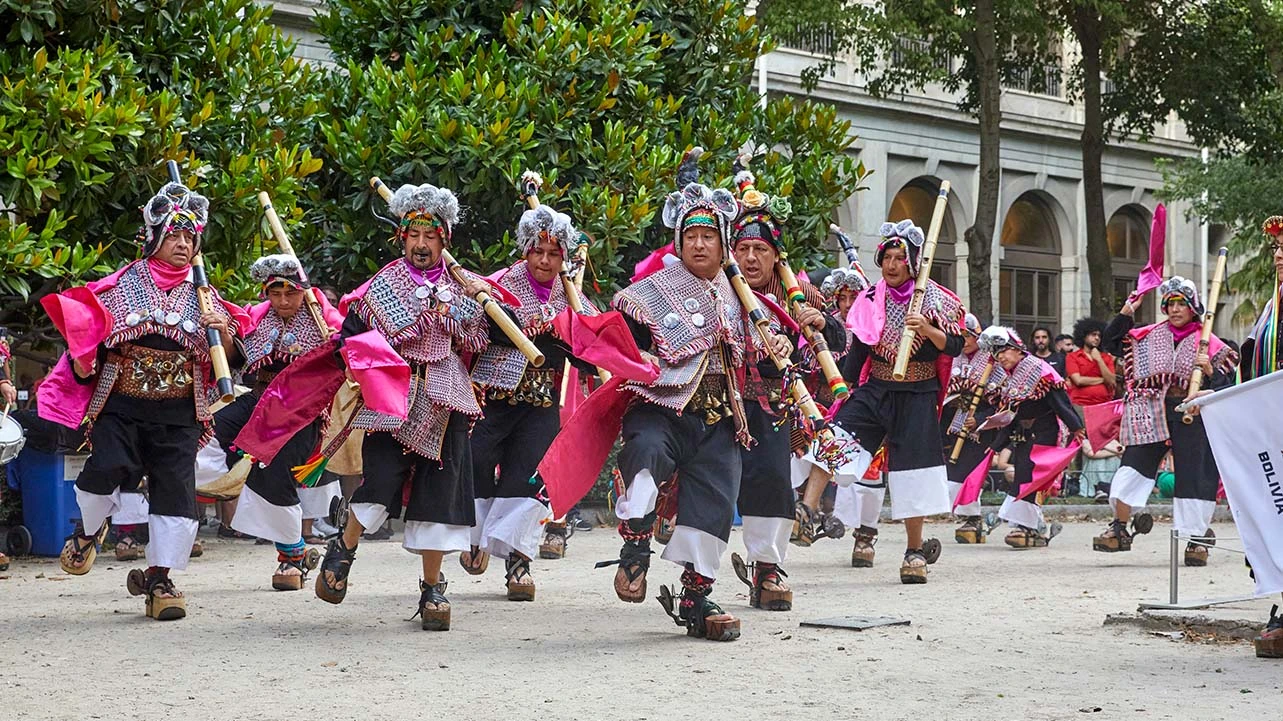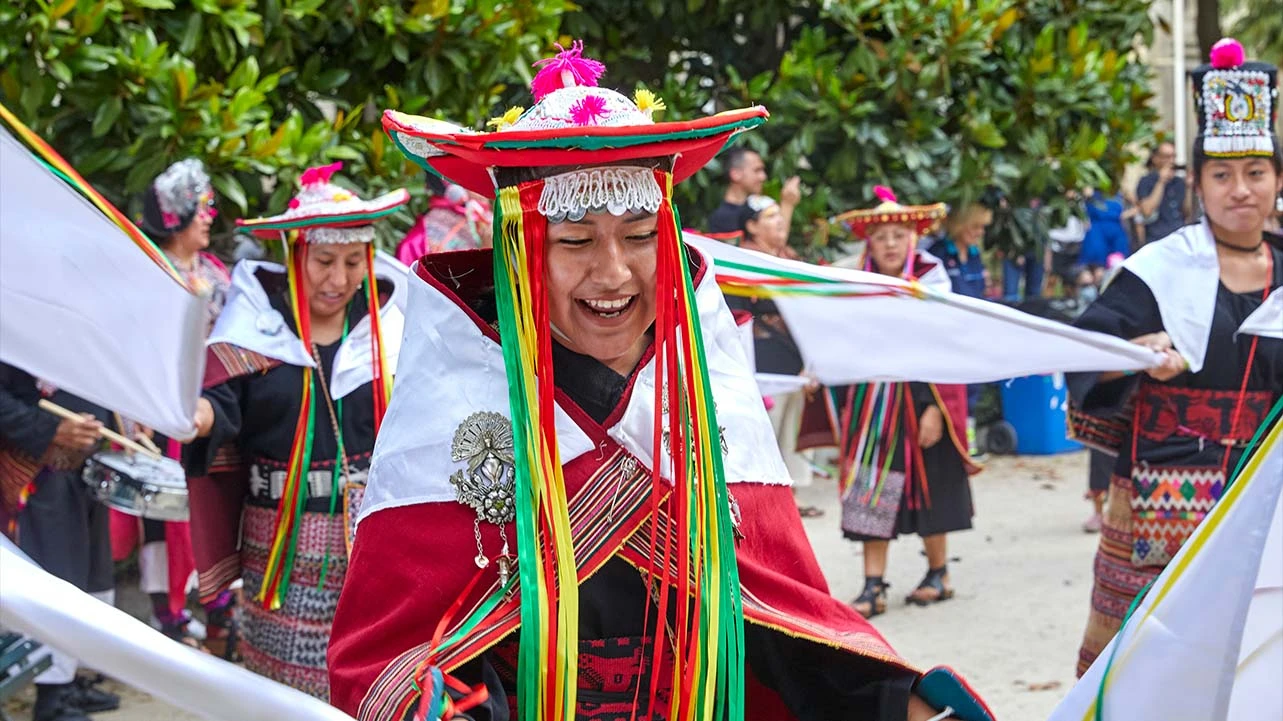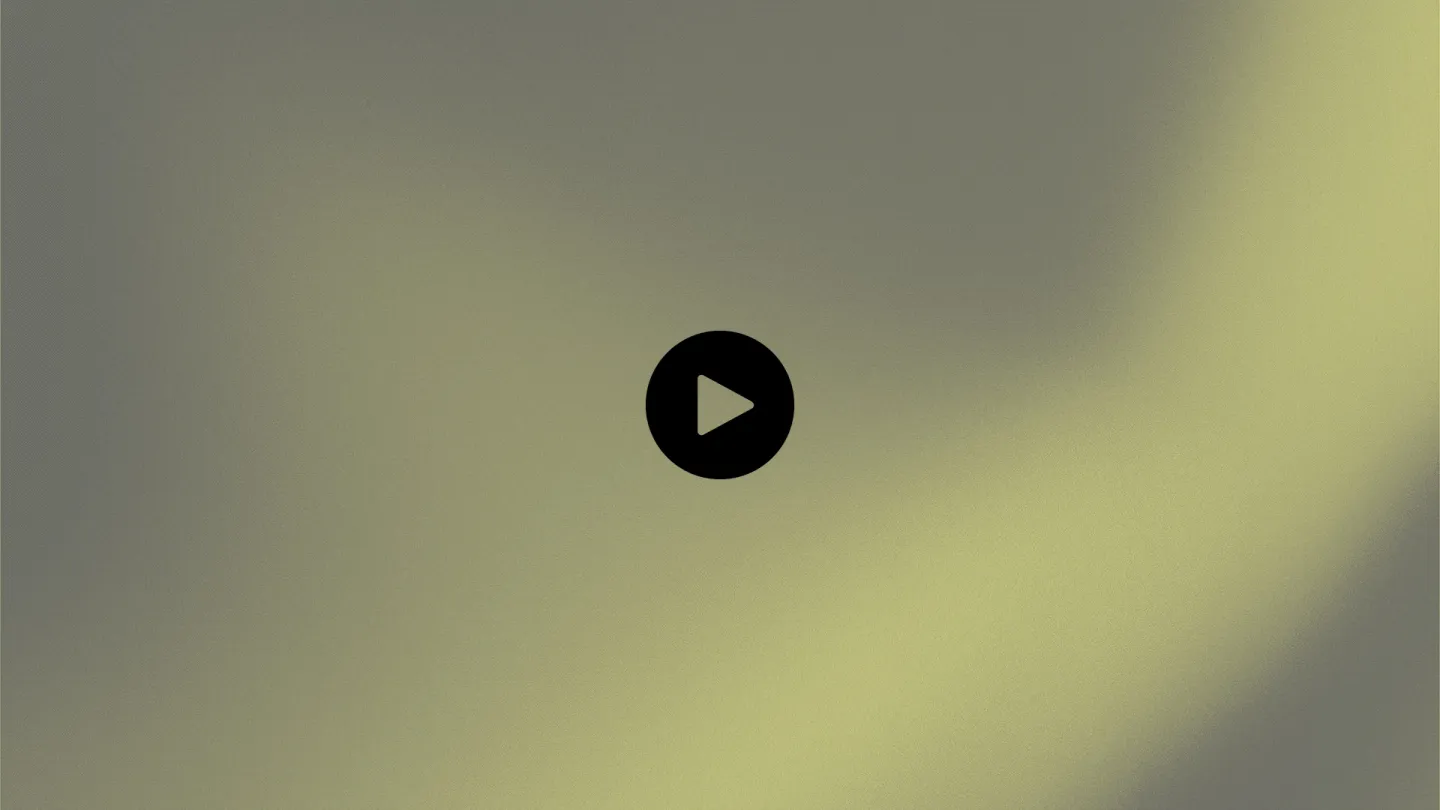
A trailer by the Ever Given jammed on the Suez Canal, Middle East Eye, 29 March 2021
Held on 18 Jun 2022
For the sixth year running, the Archipelago concert series invites the public to delve into the complex nature of the contemporary world through listening, this time setting out from one of the most remarkable images of 2021: the container ship Ever Given stranded on the Suez Canal. In the image, one of the world’s biggest ships is the backdrop to a trailer harvesting crops. The picture, taken in Egypt, demonstrates the lavish scale of global consumption, bringing two means of transport separated by a supposed technological evolution face to face. Conversely, however, the trailer is not that old and the ship has been following a well-travelled route for thousands of years. It is through this image that the 2022 edition of Archipelago recaps learnings around the common history of tradition and experimentation, adding to this narrative accounts of forced migration, the transportation of raw materials and goods, the importance of ports, colonial routes and ocean currents.
The construction of the Persian Royal Road in the fifth century BC set off a kind of proto-globalisation that radically ground to a halt when the Ottoman Empire took Constantinople in 1453. Given the monopoly of that empire and Venice over materials travelling from China, India and Persia, Europe began its overseas expansion, establishing alternative trade routes. It was at that time that a seafarer, possibly Genoese, rode trade winds through sheer luck and ended up in what is today known as Antilles. Once established in the Caribbean, the Spanish Empire opened a route from the Viceroyalty of New Granada (Cartagena de Indias today) to Seville, but not before passing through Cuba, and, making use of the Gulf Stream in the Atlantic Ocean, its boats travelled to the European continent.
[dropdown]
In 1565, following the Kuroshio Current in the Pacific Ocean, a route known as the Manila Galleon was established, joining Acapulco and the Philippines via Hawai. The power of a communications network and the sea shipping of materials laid the foundations for modern imperial control, and with it, in parallel, unexpected musical mutations. The trade winds and the Gulf Stream and Kuroshio and Humboldt Currents were and continue to be decisive for health, identity, supplies and shortages.
It is no coincidence that the interoceanic submarine cables that create the internet’s infrastructure coincide with the mapping of British, Spanish and Portuguese imperial routes. Taking advantage of the situation caused by the COVID-19 global pandemic, “platform capitalism” has sought to regulate streaming, promising to “rejuvenate” the music industry as a form of leisure and communication. Yet this “new” data flow transmitted by submarine cables is one further chapter in an ongoing material history of the expansion of imperialist power which, via maritime routes, exploits life, extracts minerals and projects the routes of people’s voluntary and forced migration.
This new edition of Archipelago, therefore, retrieves the image of the Ever Given stuck on the Suez Canal, verifying how modes of current listening are always conditioned by a profound history of currents, routes and musical mutations.
[/dropdown]
6pm / Sabatini Building, Auditorium
Presentation
—Conducted by Rubén Coll and José Luis Espejo
For the first time, the Archipelago curators will present the framework of texts, concepts and documentation they use to structure the festival’s programme by looking at the theoretical reference points from the past five editions of the festival — Habib Hassan Touma, Jean-Claude Éloy, Eugenia Fraga, Ngũgĩ wa Thiong'o and Édouard Glissant, among others — along with the recent addition of approaches by Michael Denning and his “archipelago of colonial ports” in Noise Uprising: The Audiopolitics of a World Musical Revolution (2020); Jussi Parikka with A Geology of Media (2021); Nick Srnicek’s Platform Capitalism (2018); and Kyle Devine’s view on the material cost of music in Decomposed: The Political Ecology of Music (2019).
6:20pm / Sabatini Building, Auditorium
Erkizia + Cantizano: O’Gemer, live quadraphonic performance
Xabier Erkizia works from the Basque Country, drawn by a curiosity to any form of communication or creation involving listening and sound. He has co-directed the ERTZ Festival and is a member of the Audiolab Association. Erkizia is a scholar of soundscapes and coordinator of the Soinumapa sound map, and a record label, audiovisual and radio producer. O’Gemer is an experimental film directed by Erkizia and centres on the tuning of the noise made by the axles of ox carts: an ancestral sound and possibly the oldest known sound design in a means of transport; the groan Atahualpa Yupanqui alluded to in one of his Milongas and never wanted to oil. O’Gemer is also a testimony of the journey made by these carts between Europe and Brazil, most likely following the shipping route established by Pedro Álvares Cabral in 1500 and which, since 2021, has connected Latin America and Europe via the company EllaLink’s fibre optic cables. The event will feature a live spatial version accompanied by Raul Cantizano’s electroacoustic hurdy-gurdy. Raúl Cantizano, for his part, is a guitarist from Seville. On his albums Guitar Surprise. Mito y geología del Canti (2017) and Zona Acordonada (2021) he explores the limits of flamenco, experimentation and improvisation. Moreover, his guitar has served as an accompaniment for Llorenç Barber, Niño de Elche, Juan Carlos Lérida, Belén Maya, Andrés Marín and Rocío Márquez, but for this performance he will draw from an amplified hurdy-gurdy, its hypnotic sound bearing a relation to the sound of ox carts in O’Gemer.
7:30pm / Sabatini Building, Garden
Mohammad Reza Mortazavi
Mohammad Reza Mortazavi was born in Isfahan two months after the start of the Iranian Revolution. He has lived in Germany for the past two decades, where he has shaped his career as a musician and composer. His approach to the tombak and the daf instruments, after a childhood fascination, transcends traditional playing techniques — the influence of both stretches from Central Asia to the northwest corner of Africa. This longitudinal expansion was connected for thousands of years by the Silk Road, which was paved with the construction of the Persian Royal Road, at the centre of which was today’s Iran. Mortazavi’s focus on music seeks to detach the constrictions inherent in the tombak and daf, as well as national narrative cultures. His approach on albums such as Ritme Jaavdanegi (Latency, 2019) was lauded by the English-speaking music press and in experimental circles, leading him to take part in the thirtieth anniversary of Tresor, Berlin’s legendary techno nightclub and label, as well as participating in festivals such as Berlin Atonal and Rewire. Mohammad Reza Mortazavi’s performance in Archipelago is also a chance to encounter the sounds from his most recent album Prisma (Flowfish, 2022).
8:15pm / Sabatini Building, Garden
Pujllay Masis
The first journeys between the Iberian Peninsula and today’s Americas were made by following trade winds. At sea level, these winds blow regularly from east to west, but at an altitude of 6,000 metres there is a trade wind inversion. These winds are at once a meteorological force that rocked the boats of looters and slave traders and the stream that allows planes to travel from the Americas to Europe on the route used by Latin American diaspora. The Pujllay Masis cultural association is a Madrid-based brotherhood of Bolivian origins whose objectives include disseminating Pujllay (which means “game” in Quechua), a set of dance rituals linked to Yampara culture; dances carried out in the rainy season to honour Pachamama, the Andean goddess of fertility, crops and harvest. Equally, they remember an indigenous victory that occurred in 1816 during independence from the Spanish colonies. In 2014, UNESCO declared Pujllay Intangible Cultural Heritage.
8:40pm / Sabatini Building, Garden
Edna Martinez
Edna Martinez is an artist, DJ and curator from Cartagena de Indias who lives in Berlin. Throughout her career, she has focused on spotlighting Caribbean picó, leading her to delve into the roots of popular Colombian music, African rhythms, tropical sounds and even Arabic folklore. These sounds are often the result of the industrialisation of maritime shipping and the framework of contemporary ports and canals, most notably the Suez and Panama Canals, the Strait of Malacca and the Honolulu fuel supply port. For centuries, these have been intersections of geopolitics and global trade. Martinez creates and organises an array of initiatives: Prende la Vela, a celebration of Afro-Latin culture; El Volcán - El Orgullo de Berlín, a night devoted to Colombian soundsystems; and LatinArab, a musical journey from Alexandria to Cartagena de Indias. She also works in radio on Radio Alhara and Worldwide FM.
10:30pm / Sabatini Building, Garden
Mazaher
In 1998, Ahmed El Maghraby formed Mazaher in an attempt to keep the tradition of the Egyptian Zar alive and prevent it from dying out. The Zar originally spread from Ethiopia to the Red Sea and the Persian Gulf, through the nineteenth-century slave trade, incorporating Sufism elements in Egypt. Ceremonies, officiated by women, initiate the devout by cleaning their spirit through song, dance and polyrhythmic percussion, inducing a trance and driving evil out. The participants inherit the practice of Zar from their mothers and grandmothers. Mazaher sees out the sixth edition of Archipelago, which gets under way with maritime shipping through the Suez Canal, inaugurated in 1869 during the British colonial occupation of Egypt, and ends with the same canal blocked by the Ever Given — the starting point of this programme — in 2021, and also the same canal through which submarine cables pass, following the sea trade routes joining China and Europe for thousands of years, and which stop in each major city in North Africa to enable a data flow listened to as music and, formerly, to transport materials from which instruments and their sounds are made.
Curators
Rubén Coll y José Luis Espejo
Organised by
Museo Reina Sofía
Collaboration
Sponsor
Inside the framework of
Sponsor







Más actividades

Difficulty. Forms and Political Effects of Deviation in Writing and Contemporary Art
23 February – 14 December 2026 – Check programme
Difficulty. Forms and Political Effects of Deviation in Writing and Contemporary Art is a study group aligned towards thinking about how certain contemporary artistic and cultural practices resist the referentiality that dominates the logics of production and the consumption of present-day art. At the centre of this proposal are the concepts of difficulty and deviation, under which it brings together any procedure capable of preventing artistic forms from being absorbed by a meaning that appears previous to and independent from its expression. By ensuring the perceptibility of their languages, difficulty invites us to think of meaning as the effect of a signifying tension; that is, as a productive and creative activity which, from the materiality of art objects, frees aesthetic experience from the representational mandate and those who participate in it from the passiveness associated with tasks of mimesis and decoding.
The economy of the referential norm translates the social logic of capitalism, where insidious forms of capturing subjectivity and meaning operate. In the early 1980s, and adopting a Marxist framework, poet Ron Silliman highlighted how this logic entailed separating language from any mark, gesture, script, form or syntax that might link it to the conditions of its production, rendering it fetichised (as if without a subject) and alienating its users in a use for which they are not responsible. This double dispossession encodes the political strategy of referential objectivity: with no subject and no trace of its own consistency, language is merely an object, that reality in which it disappears.
The political uses of referentiality, more sophisticated today than ever before, sustain the neoliberal-extractivist phase of capitalism that crosses through present-day societies politically, economically and aesthetically. Against them, fugitive artistic practices emerge which, drawing from Black and Queer studies and other subaltern critical positions, reject the objective limits of what exists, invent forms to name what lies outside what has already been named, and return to subjects the capacity to participate in processes of emission and interpretation.
Read from the standpoint of artistic work, the objective capture of referentiality may be called transparency. Viewed from a social contract that reproduces inequality in fixed identity positions, transparent in this objectivity are, precisely, the discourses that maintain the status quo of domination. Opposite the inferno of these discourses, this group aims to collectively explore, through deviant or fugitive works, the paradise of language that Monique Wittig encountered in the estranged practices of literature. For the political potency of difficulty — that is, its contribution to the utopia of a free language among equals — depends on making visible, first, its own deviations; from there, the norm that those deviations transgress; and finally, the narrowness of a norm which in no way exhausts the possibilities ofsaying, signifying, referring and producing a world.
From this denouncement of referential alienation, fetishisation and capture, Difficulty. Forms and Political Effects of Deviation in Writing and Contemporary Art turns its attention to the strategies of resistance deployed by contemporary artists and poets. Its interest is directed towards proposals as evidently difficult or evasive as those of Gertrude Stein, Lyn Hejinian, Theresa Hak Kyung Cha, Kameelah Janan Rasheed, Kathy Acker, María Salgado and Ricardo Carreira, and as seemingly simple as those of Fernanda Laguna, Felix Gonzalez Torres and Cecilia Vicuña, among other examples that can be added according to the desires and dynamics of the group.
The ten study group sessions, held between February and December, combine theoretical seminars, work with artworks from the Museo Reina Sofía’s Collections and exhibitions, reading workshops and public programs. All these formats serve as spaces of encounter to think commonly about certain problems of poetics — that is, certain political questions — of contemporary writing and art.
Difficulty. Forms and Political Effects of Deviation in Writing and Contemporary Art inaugurates the research line Goodbye, Representation, through which the Museo Reina Sofía’s Studies Directorship seeks to explore the emergence of contemporary artistic and cultural practices which move away from representation as a dominant aesthetic-political strategy and redirect their attention toward artistic languages that question the tendency to point, name and fix, advocating instead for fugitive aesthetics. Over its three-year duration, this research line materializes in study groups, seminars, screenings and other forms of public programming.

CLINIC 2628. A Community of Writing and Research in the Arts
February – October 2026
Clinic 2628 is a project which supports and brings together writings which stem from the intention to offer a space and sustainable time for research work in art and culture. Framed within an academic context which is increasingly less receptive to the forms in which thinking happens and is expressed, the aim is to rescue the academic from its neoliberal trappings and thus recover the alliance between precision and intuition, work and desire. A further goal is to return writing to a commons which makes this possible through the monitoring of processes and the collectivisation of ideas, stances, references and strategies.
The endeavour, rooted in a collaboration between the Museo Reina Sofía’s Studies Directorship and the Artea research group, via the i+D Experimenta project, is shaped by three annual editions conceived as spaces of experimentation, discussion and a demonstration of writings critical of what is put forward by today’s academia.
What forces, forms and processes are at play when writing about art and aesthetics? In academia, in museums and in other cultural institutions, the practice of writing is traversed by productivist logics which jeopardise rhythms of research and experimentation. The imposition of both scientism inherent in the structure of “the paper” and the quantifying of results which demand a criterion of quality and visibility sterilise and smoothen, from the outset, the coarseness that is particular to writing understood from the concrete part of language: phonic, graphic, syntactic and grammatical resistance connecting the language user to the community the language unites and activates. They also sterilise the roughness enmeshed in the same desire to write, the intuitive, clear and confusing pathways that once again connect the writer to those reading and writing, participating in a common good that is at once discovered and produced.
The progressive commercialisation of knowledge propelled by cognitive capitalism moves further away from the research and production of knowledge in artworks and artistic languages and practices. The work of curators and archive, criticism, performances and essays formerly saw a horizon of formal and emotional possibilities, of imagination that was much broader when not developed in circumstances of competition, indexing and impact. Today, would it be possible to regain, critically not nostalgically, these ways; namely, recovering by forms, and by written forms, the proximity between art thinking and its objects? How to write in another way, to another rhythm, with no more demands than those with which an artwork moves towards different ways of seeing, reading and being in the world?

Cultural Work
Thursday, 12 February 2026 – 5:30pm
This series is organised by equipoMotor, a group of teenagers, young people and older people who have participated in the Museo Reina Sofía’s previous community education projects, and is structured around four themed blocks that pivot on the monstrous.
Session number two looks to approach film as a place from which cultural work is made visible and processes of production engage in dialogue with artistic creation. From this premise, the session focuses on exploring how audiovisual content is produced, assembled and distributed, from the hands that handle the images to the bodies that participate in its circulation. The aim is to reflect on the invisible effort, precarity and forms of collaboration that uphold cultural life, that transform the filmic experience into an act that recognises and cares for common work.

The (legal) person and the legal form. Chapter II
8, 12, 15 January, 2026 – 16:00 to 19:00
As part of the Studies Constellation, the Study Directoship’s annual fellowship, art historian and theorist Sven Lütticken leads the seminar The (Legal) Person and the Legal Form: Theoretical, Artistic, and Activist Commitments to foster dialogue and deepen the hypotheses and questions driving his research project.
This project, titled Unacting Personhood, Deforming Legal Abstraction, explores the dominance of real abstractions—such as exchange value and legal form—over our processes of subjectivation, and asks how artistic practices can open up alternative ways of representing or performing the subject and their legal condition in the contemporary world.
The seminar consists of eight sessions, divided into three chapters throughout the academic year. While conceived as non-public spaces for discussion and collective work, these sessions complement, nourish, and amplify the public program of the Studies Constellation.
In this second chapter of the seminar, the inquiry into the aesthetics and politics of legal form continues with three sessions that pick up the discussions held in Chapter I but propose new lines of flight. The first session focuses on international law via the writings of the British author China Miéville, which allows us to reconsider the notion of the legal form –following Evgeny Pashukanis— and, through it, a variety of (people’s) tribunals. While the crucial concept of the legal person –as the right-holder central to the form of law— was debated in Chapter I, the second session focuses on attempts to extend personhood not (just) to corporations, but rather to nonhuman animals or ecosystems. Finally, the third session poses the question: how can groups and networks use officially recognized organizational forms (such as the foundation or the cooperative) and/or use a collective persona (without necessarily a legal “infrastructure” to match) to act and represent themselves?

Oliver Laxe. HU/هُوَ. Dance as if no one were watching you
Tuesday, 16 December 2025 – 7pm
As a preamble to the opening of the exhibition HU/هُوَ. Dance as if no one were watching you, film-maker Oliver Laxe (Paris, 1982) engages in conversation with the show’s curators, Julia Morandeira and Chema González, touching on the working processes and visual references that articulate this site-specific project for the Museo Reina Sofía. The installation unveils a new programme in Space 1, devoted from this point on to projects by artists and film-makers who conduct investigations into the moving image, sound and other mediums in their exhibition forms.
Oliver Laxe’s film-making is situated in a resilient, cross-border territory, where the material and the political live side by side. In HU/هُوَ. Dance as if no one were watching you, this drift is sculpted into a search for the transcendency that arises between dancing bodies, sacred architectures and landscapes subjected to elemental and cosmological forces. As a result, this conversation seeks to explore the relationship the piece bears to the imagery of ancient monotheisms, the resonance of Persian Sufi literature and the role of abstraction as a resistance to literal meaning, as well as looking to analyse the possibilities of the image and the role of music — made here in collaboration with musician David Letellier, who also works under the pseudonym Kangding Ray — in this project.
These inaugural conversations, part of the main working strands of the Museo’s Public Programmes Area, aim to explore in greater depth the exhibition narratives of the shows organised by the Museo from the perspective of artists, curators and specialists.




![Miguel Brieva, ilustración de la novela infantil Manuela y los Cakirukos (Reservoir Books, 2022) [izquierda] y Cibeles no conduzcas, 2023 [derecha]. Cortesía del artista](https://recursos.museoreinasofia.es/styles/small_landscape/public/Actividades/ecologias_del_deseo_utopico.jpg.webp)
![Ángel Alonso, Charbon [Carbón], 1964. Museo Reina Sofía](https://recursos.museoreinasofia.es/styles/small_landscape/public/Actividades/perspectivas_ecoambientales.jpg.webp)